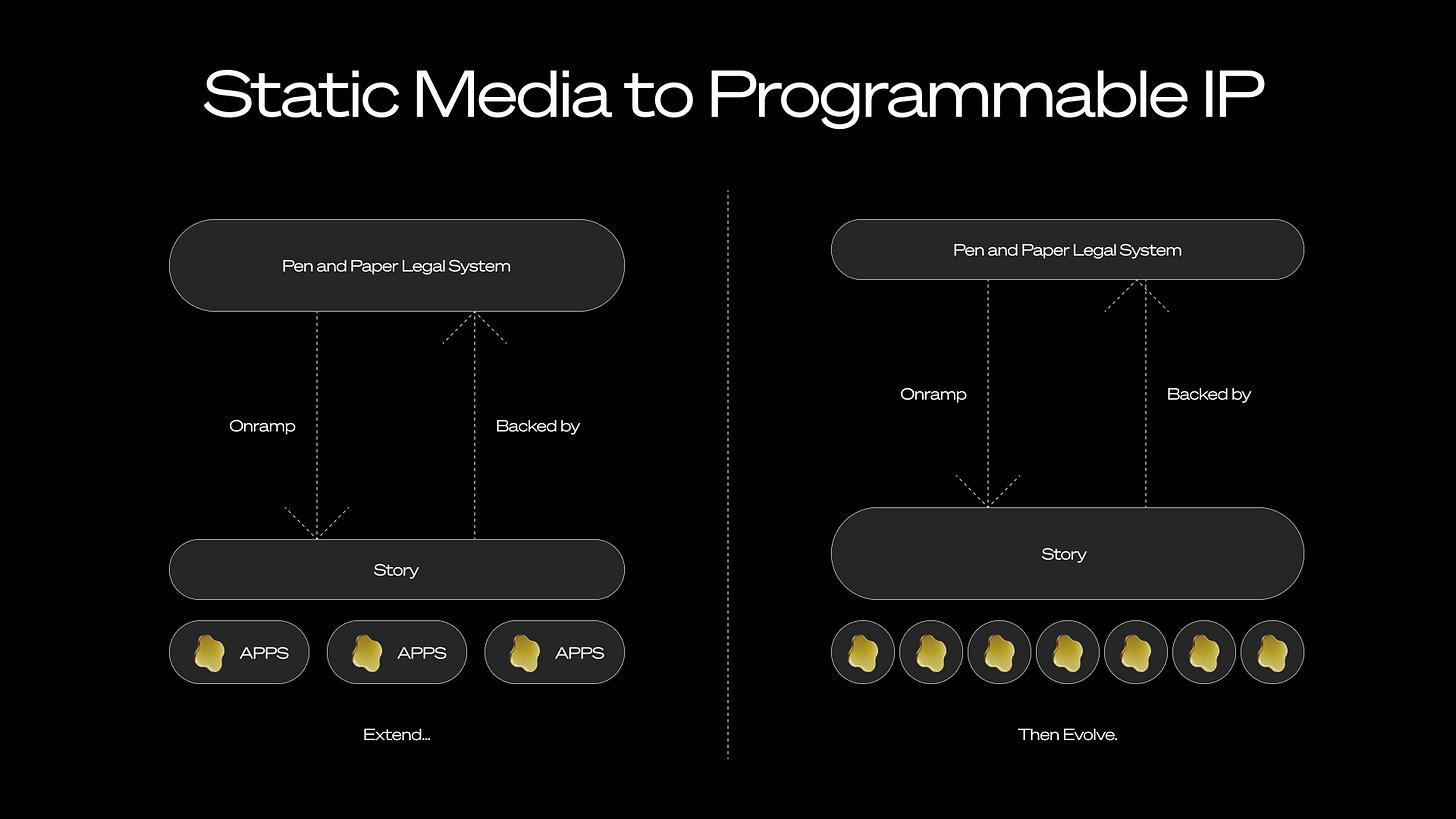We live offchain and vacation onchain. For those who use crypto, blockchains often feel like a theme park with all the trappings but none of the gravity of our offchain life. For spectators and power users alike, the question looms: Why haven’t we seen more mainstream adoption yet?
I’ve been working on blockchains for around 3 years, yet still my salary is paid in fiat, most of my purchases are made via credit cards, my identity primarily consists of a Google login and a government ID, and my IP is still trapped on monolithic content platforms.
Most NFTs are pointers to media files, interesting collectibles but not representations of digital property rights. Tokens used in DeFi do enable fungible value, but often neglect utility beyond trading itself. These are exciting technical advances, but they feel like simulations nonetheless.
Blockchains can become the protocols for the next era of the internet, but today, they are fundamentally sandboxed from the institutions that permeate our lives. So how and when does onchain usurp the primacy of the offchain world?
The answer lies in bootstrapping blockchains via the systems that currently dominate our world. We need to leverage traditional institutions as a catalyst for mainstream adoption, not sidestep them as a hurdle to be avoided. Blockchains must first extend, and then evolve.
This strategy has a familiar analogue in social networks that applies equally to blockchain networks: come for the tool, stay for the network. Instagram started off as a photo filtering app which then funneled its users into bootstrapping a new social network.
Similarly, instead of attempting to create a parallel world from scratch, more blockchain applications should extend the offchain environment, offering the composability, neutrality, and lower take rates that are only possible via crypto. This is the “tool” stage, where blockchain-powered applications acquire users by simply working better than their offchain counterparts. Once these applications reach critical mass, they can then meaningfully evolve user behaviors in ways that are unique to fully onchain networks. Extend, and then evolve.
This is already happening with money.
Take the case of USDC. Consider two parallel tracks: there’s the offchain system (banks, SWIFT, etc) and the onchain system (eg, USDC) built on top.
In the earliest stages, USDC is merely a mirrored ledger of fiat, because USDC derives its value entirely from trust in the real world assets that back the token. People value USDC because they know they can redeem it for dollars.
Eventually, the benefits of blockchain networks take hold: lower take rates in applications (passed onto consumers as cheaper fees), access to new decentralized financial mechanisms that are not feasible in traditional finance, and global composability, which allows for instant transmission of value across borders (a very costly process today). Slowly, then all at once, the primacy of onchain versus offchain inverts. This process culminates when onchain USDC is intrinsically trusted, becoming the standard solution for payments worldwide. In this new arrangement, redemption for US dollars still offers an essential guarantee of value, but it is no longer the sole reason for USDC’s existence. There are now thousands of consumer and financial applications built on top of the onchain currency. What started off looking like merely a tool becomes a full fledged financial network.
There are many other examples of technology successfully inverting traditional networks.
Fintech did this to cash: today, most people have very little physical cash and all of their assets are represented as bits. Just a decade ago, we would never have left home without cash, but now we trust the digital network enough to represent their cash assets.
Similarly, in ecommerce, storefronts started off as digital wrappers for physical locations and their inventory. Now, many ecommerce stores (think Shopify and Amazon) are digital-only, outsourcing all the physical inventory and logistics.
Instead of building an isolated island, we should establish blockchain networks via real world bootstrapping. Extend, and then evolve. This approach can be applied to many of the largest asset categories: stocks, real estate, intellectual property, and more.
At Story, we are mapping expensive and opaque pen-and-paper legal contracts to smart contracts in order to establish the legitimacy of programmable IP. Over time, as more IP onramps onto Story, blockchains will become the primary infrastructure for exchanging, licensing, and monetizing IP. Through consumer applications built on top of Story’s infrastructure, millions of creators will gain access to the benefits of the legal system. What started as turning law into code consummates with code turning into law, where IP is represented via a blockchain based network. The connection to the offchain legal system still offers a critical source of legitimacy that enables Story to settle disputes, but many legal interactions will be cheaper, more frictionless, and more accessible to perform onchain.
Real world bootstrapping — coming for the tool, and staying for the network — allows crypto to break out of its isolated theme park and achieve adoption at scale.
It won’t be easy. Metcalfe’s law is powerful, but it’s not magic. Achieving network effects in blockchain requires serious care and cultivation, especially when navigating the intricacies of traditional systems.
However, it is only through these efforts that we can uncover the path for crypto to evolve from a sandboxed theme park into the backbone of a fully fledged onchain internet. Real world bootstrapping will enable blockchains to eat the world.
Thank you to Chris Dixon and Sonal Chokshi for their conversations and many contributions to this piece.






Amazing Sir
thank's !